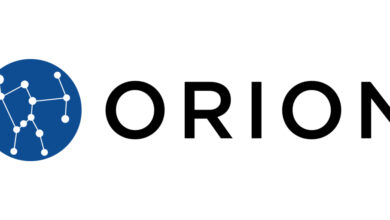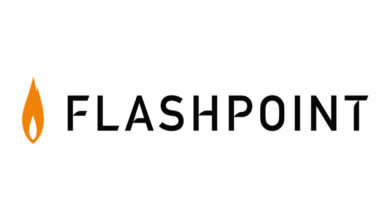Global GMO Testing Market (2020 to 2028) – by Trait, Crop Type, Processed Food Type, Technology and Region – ResearchAndMarkets.com

DUBLIN–(BUSINESS WIRE)–The “GMO Testing Market Size, Share & Analysis, By Trait By Crop Type, By Processed Food Type, By Technology, By Region, Global Forecast To 2028” report has been added to ResearchAndMarkets.com’s offering.
Growing demand for fresh and superior quality of food products from consumers, has led to initiation of food safety practices in the food industry, which is boosting demand for GMO testing and is driving market revenue growth.
Market Size – USD 1,941.0 Million in 2020, Market Growth – CAGR of 7.7%, Market Trends – Increasing focus on R&D of advanced GMO testing instruments at reasonable costs
The global GMO testing market size is expected to reach USD 3,533.5 Million in 2028, and register a CAGR of 7.7% during the forecast period. GMO (Genetically Modified Organisms) testing is done regularly to avoid cross-contamination and obstruct entry of genetically modified crops in non-genetically modified products. DNA analysis techniques are used to detect presence of genetically modifies organisms by extracting DNA and using specific PCR assays for testing. Testing of food additives such as lecithin, vitamin E (tocopherol), and proteins from genetically modified soybean is boosting growth of the global GMO testing market.
Lack of appropriate regulatory framework, high cost of GMO testing, and ban on production of GMO products are factors that could hamper market growth.
Companies Mentioned
- SGS
- Eurofins Scientific
- Intertek Group plc.
- BIO-RAD
- BUREAU VERITAS
- IEH Laboratories & Consulting Group
- MERIEUX NutriSciences
- Microbac Laboratories
- OMIC
- Thermo Fisher Scientific
Some Key Findings From the Report:
- Among the crop type segments, the corn segment accounted for the largest revenue share in 2020. The soy segment is expected to register the highest growth rate during the forecast period.
- Among the technology segments, the polymerase chain reaction test segment accounted for the largest revenue share in 2020, as this test qualifies and quantifies genetically modified organisms present in food or feed samples.
- Among the trait segments, the stacked segment is expected to register the highest growth during the forecast period.
- Europe GMO testing market accounted for the largest revenue share in 2020, due to stringent regulations for using GMO testing in various end-use industries.
- The North America market is expected to register considerably high CAGR during the forecast period, as it is the largest producer of genetically modified crops and need GMO testing for such crops.
Reasons to Buy the Report
- A robust analysis and estimation of the GMO Testing Market with four levels of quality check – in-house database, expert interviews, governmental regulation, and a forecast specifically done through time series analysis
- A holistic competitive landscape of all the major players in the GMO Testing Market. The report covers their market shares, strategic initiatives, new product launches, R&D expenditure, M&As, Joint ventures, expansionary plans, product wise metric space analysis and key developments
- Go-to-market strategies specifically formulated in line with location analysis which takes into the factors such as government regulations, supplier mapping, supply chain obstacles, and feedback from local vendors
- Most deep dive segmental bifurcation available currently in the market. Our stellar methodology helps us understand the overall gamut of the supply chain and will help you explain the current market dynamics
- Special focus given on vendor landscape, supplier portfolio, customer mapping, production capacity, and yearly capacity utilization
Key Topics Covered:
Chapter 1. Market Synopsis
Chapter 2. Executive Summary
Chapter 3. Indicative Metrics
3.1. Need to ensure sufficient nutrient consumption
3.2. Technologically advanced farming practices
3.3. Diverse processed foods obtained from GM crops
Chapter 4. GMO Testing Segmentation & Impact Analysis
4.1. GMO Testing Segmentation Analysis
4.2. GMO Testing Market Value Chain Analysis
4.3. Regulatory framework
4.4. GMO Testing Market Impact Analysis
4.4.1. Market driver analysis
4.4.1.1. Labeling mandates in several countries
4.4.1.2. Increasing investment in biotech industry
4.4.2. Market restraint analysis
4.4.2.1. Ban on the production of GM crops in some regions
4.4.2.2. Unaffordability of tests by food manufacturers & channel members
4.5. Key opportunities prioritized
4.6. GMO Testing Pricing Analysis
4.7. Industry analysis – Porter’s
4.8. GMO Testing PESTEL Analysis
Chapter 5. GMO Testing Market By Trait Type Insights & Trends
Chapter 6. GMO Testing Market By Crop Type Insights & Trends
Chapter 7. GMO Testing Market By Processed Food Type Insights & Trends
Chapter 8. GMO Testing Market By Technology Insights & Trends
Chapter 9. GMO Testing Market Regional Outlook
Chapter 10. Competitive Landscape
10.1. Market Revenue Share by Manufacturers
10.2. Manufacturing Cost Breakdown Analysis
10.3. Mergers & Acquisitions
10.4. Strategy Benchmarking
10.5. Vendor Landscape
Chapter 11. Company Profiles
For more information about this report visit https://www.researchandmarkets.com/r/7h4g18
Contacts
ResearchAndMarkets.com
Laura Wood, Senior Press Manager
[email protected]
For E.S.T Office Hours Call 1-917-300-0470
For U.S./CAN Toll Free Call 1-800-526-8630
For GMT Office Hours Call +353-1-416-8900





